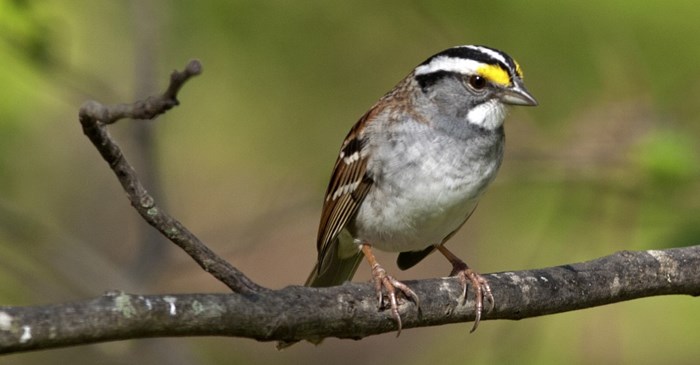Sure, the shiny bells and whistles of the bird world—those bright and cheery warblers—have mostly winged their way south to wintering grounds by now. But it’s still fall, and migration’s not over yet! There are still plenty of birds to see, with new arrivals every day.
Late fall means you have to venture out from those wooded warbler hot spots and into new habitats to find sparrows, waterfowl, and shorebirds. Here are a few places that could be hopping right through Thanksgiving.
Weedy Fields for Sparrows
Overgrown pastures, abandoned lots, fields gone fallow—all are havens for the next big wave of migrants to arrive after warblers: sparrows. Looking for sparrows along grassy trails cut in fields can be fun because your birds will flush as you walk and hopefully land on a branch just ahead of you in clear view. Keep an eye out for White-throated Sparrows in the East, Golden-crowned Sparrows in the West, Eastern Towhees in the South, and White-crowned Sparrows and American Tree Sparrows all over.
Mudflats and Marshes for Dabbling Ducks
Late fall is to ducks what September is to warblers—prime migration time. Dabblers are ducks that skim the surface of the water for seeds, aquatic vegetation, and invertebrates, so look for them in shallower waters. This group includes some handsome ducks: the Green-winged Teal with its iridescent green face mask, the Northern Pintail with its elegant tail plume, and the dashing Wood Duck. Females and young of these species tend to migrate earlier and move farther south, while males only move when the cold weather hits.
Bigger Lakes and Reservoirs for Diving Ducks
Divers are ducks that plunge underwater and paddle with their large feet to reach mollusks, invertebrates, fish, and submerged aquatic vegetation. Accordingly, diving ducks such as Common Goldeneyes and Common Mergansers favor deeper waters. The gales of November bring a bluebill wind out of the North, as rafts of Lesser and Greater Scaup sweep out of Canada. Hardy divers are pushed south by Old Man Winter; they migrate as their northern waters freeze over.
Coastal Beaches for Shorebirds
The waning days of autumn are too cold for sunbathing or building sandcastles, but if you’re a shorebird it’s the perfect time to snag invertebrates from piles of seaweed washed up on the beach. Large numbers of Sanderlings and Willets settle into their wintering grounds along seacoast beaches in November and early December. Likewise, huge congregations of Dunlins can be found in estuaries and muddy bays. Along the East Coast, it’s the perfect time to add the stout little Purple Sandpiper to your life list, but don’t be fooled—they’re not purple, more gray and white. On the West Coast, look for Black Turnstones and Surfbirds that spend their days foraging on rocky coastlines.
Republished with permission from the Cornell Lab of Ornithology
